Plus500 Bundle
How Did Plus500 Become a Fintech Powerhouse?
Embark on a journey through the Plus500 SWOT Analysis to discover how this financial technology firm revolutionized the online trading landscape. From its inception in Israel in 2008, Plus500 has consistently innovated, transforming the way millions access and engage with financial markets. This brief history of Plus500 reveals the strategic decisions and pivotal moments that shaped its remarkable ascent.
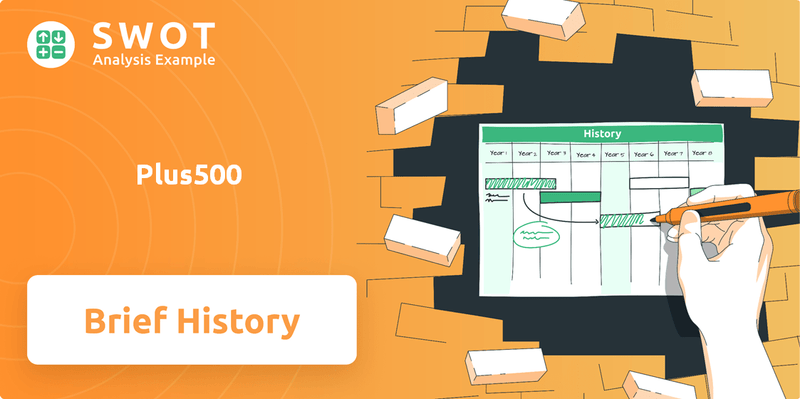
The Plus500 company story is a testament to the power of user-friendly design and strategic market positioning. As a leading CFD provider, Plus500 quickly gained traction by offering a diverse range of instruments and flexible trading options. Understanding the Plus500 history is crucial for anyone interested in the evolution of the online trading platform and the broader financial technology sector, revealing key milestones and the company's adaptability.
What is the Plus500 Founding Story?
The story of the Plus500 company began in 2008. It was a time when online trading was gaining traction, and a group of individuals saw an opportunity to create a more accessible platform. Their vision was to simplify the complexities of financial trading for a broader audience.
The company was founded by six co-founders: Gal Haber, Alon Gonen, Elad Ben-Izhak, Shimon Sofer, Omer Elazari, and Shlomi Weizmann. They established the company in Israel, a country known for its technological innovation. This strategic location provided a favorable environment for developing their online trading platform.
The initial focus was on providing Contracts for Difference (CFDs) through an easy-to-use online platform. This approach allowed clients to trade various financial instruments. The founders bootstrapped the company, using their own resources to develop the platform and attract early users. This self-funded approach allowed them to maintain control over the company's direction and product development.
The founders' diverse skills, including software development, finance, and online marketing, were crucial in building a robust trading platform and reaching their target audience.
- The initial business model centered on providing Contracts for Difference (CFDs) through an intuitive online platform.
- The company was established in Israel, a hub for technological innovation.
- The founders aimed to revolutionize online trading by making it accessible and comprehensive.
- The company's early success was driven by a focus on user experience and a wide selection of tradable assets.
The founders' collective goal was to democratize online trading. They wanted to make it available to a wider audience through technological innovation. The economic context of 2008, marked by increasing internet use and interest in online financial services, provided a good environment for Plus500's establishment and growth. For further insights into their strategic moves, you can explore the Growth Strategy of Plus500.
Plus500 SWOT Analysis
- Complete SWOT Breakdown
- Fully Customizable
- Editable in Excel & Word
- Professional Formatting
- Investor-Ready Format
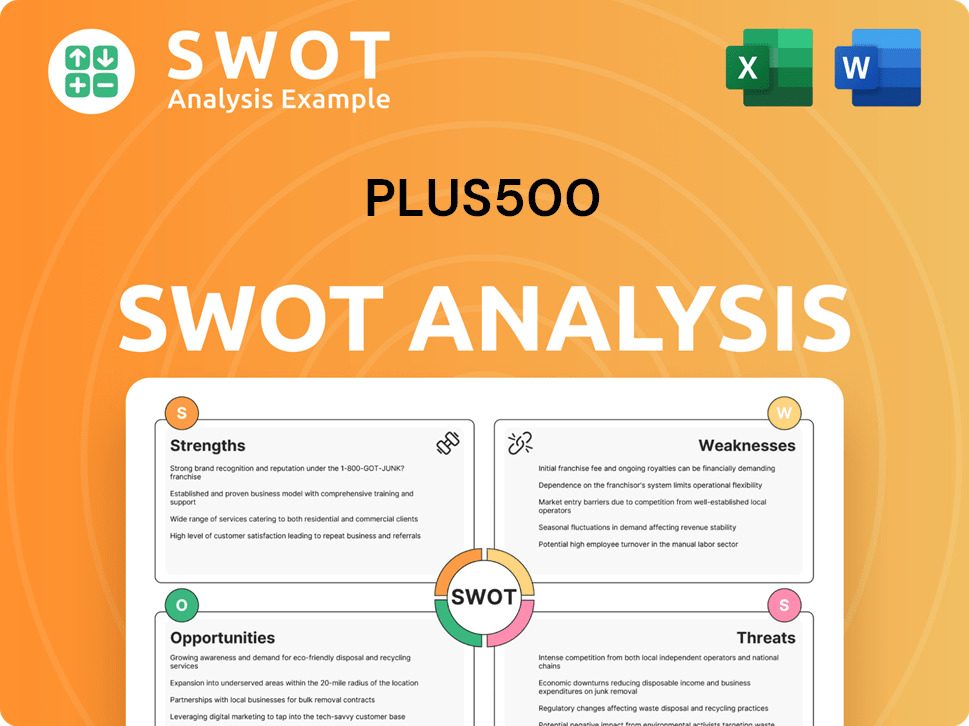
What Drove the Early Growth of Plus500?
The early phase of the Plus500 company's journey was marked by swift technological advancements and strategic market penetration. This period saw the evolution of its online trading platform and expansion into mobile trading. Key milestones included regulatory approvals and a successful listing on the London Stock Exchange, fueling further growth.
Following its founding in 2008, Plus500 quickly enhanced its web-based platform. In 2009, a downloadable PC client was introduced, broadening its user base. The launch of iPhone and iPad apps in 2010 positioned the company at the forefront of mobile trading. These early moves into mobile were crucial for expanding its reach.
The company continued to expand its mobile trading capabilities with the introduction of an Android app in 2011. This focus on mobile technology was a key part of its strategy. The development of Windows Phone and SmartWatch apps in 2014 and 2015 further demonstrated its commitment to cutting-edge trading technology, enhancing its Online trading platform.
Plus500 made significant strides in gaining regulatory credibility. In 2013, Plus500UK Ltd, a subsidiary, received authorization from the Financial Conduct Authority (FCA) in the UK. This approval was critical for attracting a diverse clientele and entering a major European market. This regulatory approval was pivotal for attracting a more diverse and trust-conscious clientele.
A major corporate milestone was achieved in 2014 with the listing on the AIM section of the London Stock Exchange. This IPO raised approximately $75 million, providing resources for further expansion and product development. Continuous improvements in its CFD provider offerings across various asset classes allowed Plus500 to grow its user base. For more insights, explore the Competitors Landscape of Plus500.
Plus500 PESTLE Analysis
- Covers All 6 PESTLE Categories
- No Research Needed – Save Hours of Work
- Built by Experts, Trusted by Consultants
- Instant Download, Ready to Use
- 100% Editable, Fully Customizable
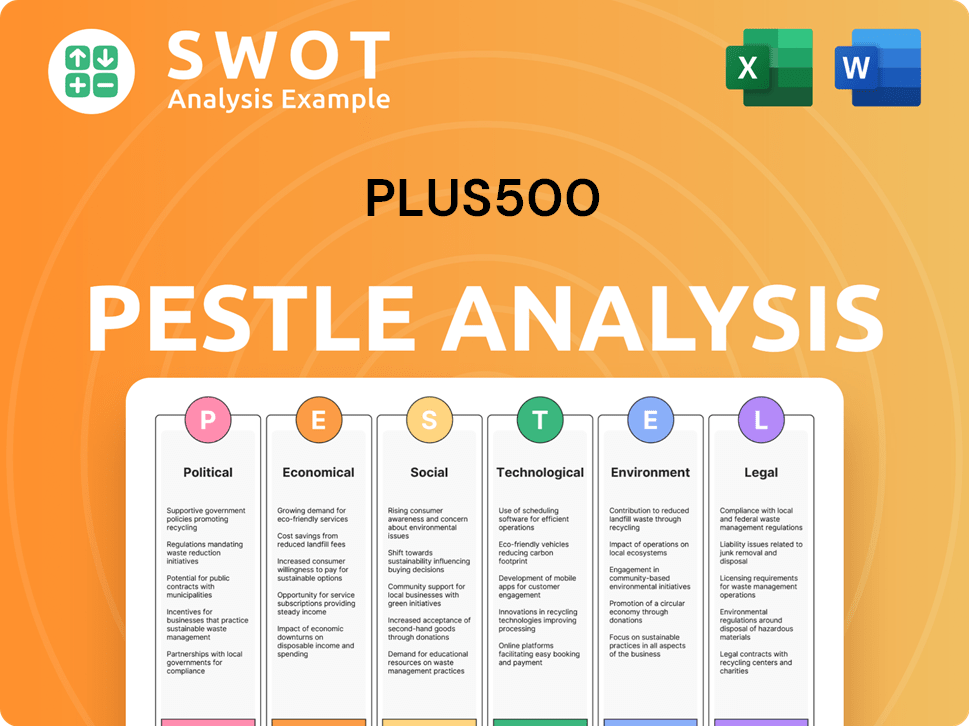
What are the key Milestones in Plus500 history?
The evolution of the Plus500 company, a prominent online trading platform and CFD provider, is marked by significant milestones in the Plus500 history. From its inception, Plus500 has navigated the financial technology landscape, achieving notable growth and adapting to regulatory changes and market dynamics. Examining the Plus500 company's journey reveals key moments that shaped its trajectory and solidified its position in the industry.
| Year | Milestone |
|---|---|
| 2008 | Plus500 was founded, marking the beginning of its journey in the online trading sector. |
| 2010 | Launched mobile trading apps for iPhone and iPad, enhancing accessibility for its users. |
| 2013 | Obtained authorization and regulation from the FCA in the UK, a pivotal step for its credibility. |
| 2015 | Introduced a SmartWatch app, showcasing its commitment to technological advancement. |
| 2018 | Plus500's market capitalization reached over $2 billion, reflecting its significant growth. |
| 2021 | Acquired Cunningham Futures and TradeSniper, expanding its offerings into the US futures and options market. |
Plus500 has consistently demonstrated innovation in its approach to online trading. Early adoption of mobile trading apps for iOS and Android devices positioned the platform as a leader in accessible trading, while the introduction of a SmartWatch app further enhanced user convenience.
Launched iPhone and iPad apps in 2010, followed by an Android app in 2011. This early move made trading more accessible.
Introduced a SmartWatch app in 2015, showcasing a commitment to technological innovation and user convenience. This app provided real-time market data and trading capabilities.
Expanded product offerings beyond CFDs. The acquisitions of Cunningham Futures and TradeSniper in 2021 exemplify this.
Despite its successes, Plus500 has faced challenges, including regulatory scrutiny and compliance issues. The temporary freeze on client accounts in 2015, due to AML compliance issues, highlighted the importance of robust internal controls and compliance procedures. For more information about the company's ownership, consider reading this article about Owners & Shareholders of Plus500.
In 2015, the FCA imposed a temporary freeze on client accounts due to AML compliance issues. This led to a drop in share price.
Plus500 has faced ongoing regulatory scrutiny in various jurisdictions. This has led to enhanced compliance procedures and increased operational costs.
The company's performance is affected by market volatility and economic conditions. Sudden market movements can impact trading volumes and profitability.
Plus500 Business Model Canvas
- Complete 9-Block Business Model Canvas
- Effortlessly Communicate Your Business Strategy
- Investor-Ready BMC Format
- 100% Editable and Customizable
- Clear and Structured Layout
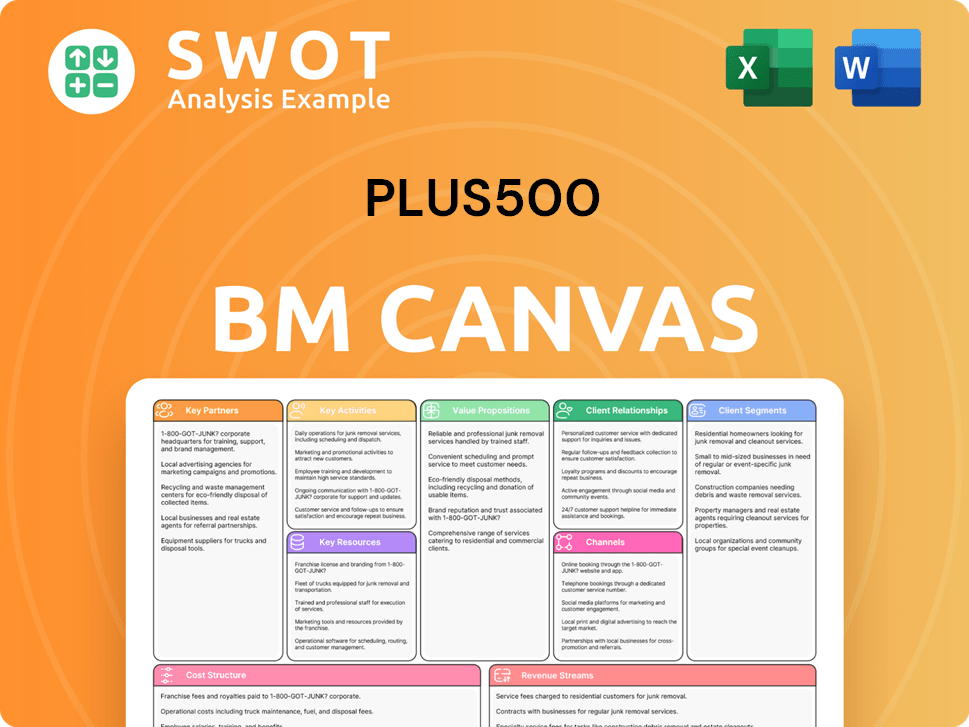
What is the Timeline of Key Events for Plus500?
The Plus500 history demonstrates a steady progression of technological advancement and strategic market penetration, evolving from its inception in Israel to a prominent online trading platform. The Plus500 company has consistently expanded its offerings and geographical reach, adapting to industry changes and regulatory requirements to maintain its position as a leading CFD provider. This commitment to innovation and strategic foresight has been key to its growth and success in the financial technology sector.
| Year | Key Event |
|---|---|
| 2008 | Plus500 was founded in Israel. |
| 2009 | The company launched its downloadable PC client. |
| 2010 | Plus500 introduced its iPhone and iPad apps, expanding mobile trading capabilities. |
| 2011 | An Android app was launched, further broadening mobile access for users. |
| 2013 | Plus500UK Ltd was authorized and regulated by the FCA, enhancing its regulatory standing. |
| 2014 | The company was listed on the AIM section of the London Stock Exchange, marking a significant milestone. |
| 2015 | A SmartWatch app was launched; the FCA temporarily froze client accounts. |
| 2018 | Plus500 became a constituent of the FTSE 250 Index, reflecting its market capitalization growth. |
| 2021 | Acquisition of Cunningham Futures and TradeSniper, marking entry into US futures and options market. |
| 2022 | Reported record annual revenue of $832.6 million and Adjusted EBITDA of $453.7 million. |
| 2023 | Continued strong financial performance with reported revenue of $649.3 million and Adjusted EBITDA of $319.6 million. |
| 2024 | Continued focus on strategic expansion and product diversification, including the launch of Plus500 Invest, offering real shares and ETFs. |
Plus500 plans to expand its global footprint, targeting new markets to broaden its client base. The company is leveraging its strong regulatory compliance and advanced technology. This strategy aims to capitalize on the increasing demand for online trading services worldwide.
Plus500 is diversifying its product offerings beyond CFDs, including real shares and ETFs through Plus500 Invest. This move aligns with industry trends toward multi-asset platforms. It aims to cater to a wider range of investor preferences and increase revenue streams.
The company is committed to enhancing its trading platforms through proprietary technology. This includes improving user experience and introducing new features. Continued investment in technology is crucial for maintaining a competitive edge in the financial technology sector.
A key strategic focus is expanding into the US market through futures and options offerings. This expansion aims to significantly grow Plus500's presence in the lucrative US market. The company's success in this market will be crucial for future growth.
Plus500 Porter's Five Forces Analysis
- Covers All 5 Competitive Forces in Detail
- Structured for Consultants, Students, and Founders
- 100% Editable in Microsoft Word & Excel
- Instant Digital Download – Use Immediately
- Compatible with Mac & PC – Fully Unlocked
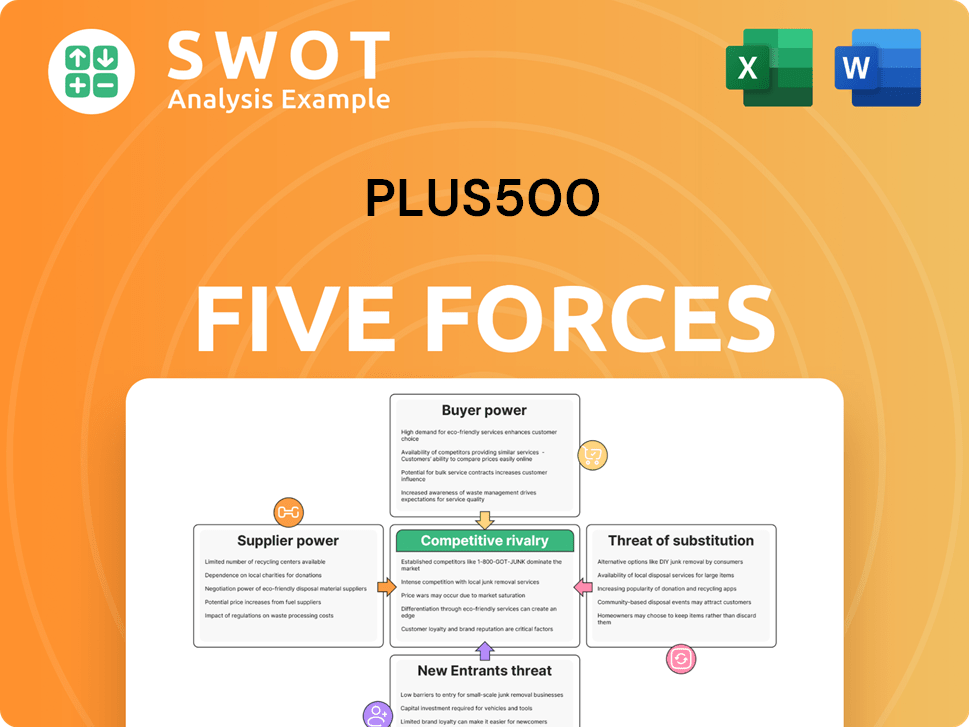
Related Blogs
- What is Competitive Landscape of Plus500 Company?
- What is Growth Strategy and Future Prospects of Plus500 Company?
- How Does Plus500 Company Work?
- What is Sales and Marketing Strategy of Plus500 Company?
- What is Brief History of Plus500 Company?
- Who Owns Plus500 Company?
- What is Customer Demographics and Target Market of Plus500 Company?
Disclaimer
All information, articles, and product details provided on this website are for general informational and educational purposes only. We do not claim any ownership over, nor do we intend to infringe upon, any trademarks, copyrights, logos, brand names, or other intellectual property mentioned or depicted on this site. Such intellectual property remains the property of its respective owners, and any references here are made solely for identification or informational purposes, without implying any affiliation, endorsement, or partnership.
We make no representations or warranties, express or implied, regarding the accuracy, completeness, or suitability of any content or products presented. Nothing on this website should be construed as legal, tax, investment, financial, medical, or other professional advice. In addition, no part of this site—including articles or product references—constitutes a solicitation, recommendation, endorsement, advertisement, or offer to buy or sell any securities, franchises, or other financial instruments, particularly in jurisdictions where such activity would be unlawful.
All content is of a general nature and may not address the specific circumstances of any individual or entity. It is not a substitute for professional advice or services. Any actions you take based on the information provided here are strictly at your own risk. You accept full responsibility for any decisions or outcomes arising from your use of this website and agree to release us from any liability in connection with your use of, or reliance upon, the content or products found herein.